Unlocking Your Spice Cabinet: The Real Magic Behind Pumpkin Spice
Every year, as soon as the first leaf turns yellow, the world goes wild for pumpkin spice. It’s in our lattes, our muffins, our candles… everywhere. And while most people just enjoy the cozy, comforting flavor, my brain sees something totally different. After years of working with clinical nutrition and herbalism, I look at that spice blend and see a powerhouse of some of the most amazing plants on the planet.
In this article
My fascination isn’t with the seasonal trend, but with the raw ingredients themselves. We’re talking about cinnamon, ginger, nutmeg, cloves, and allspice. These aren’t just flavor dust. They are potent, dried plant materials packed with compounds that have been part of traditional wellness practices for ages. It’s all about understanding what’s already in your kitchen and how to use it to support your body. This isn’t about replacing medicine, of course, but about using food as your first line of defense.
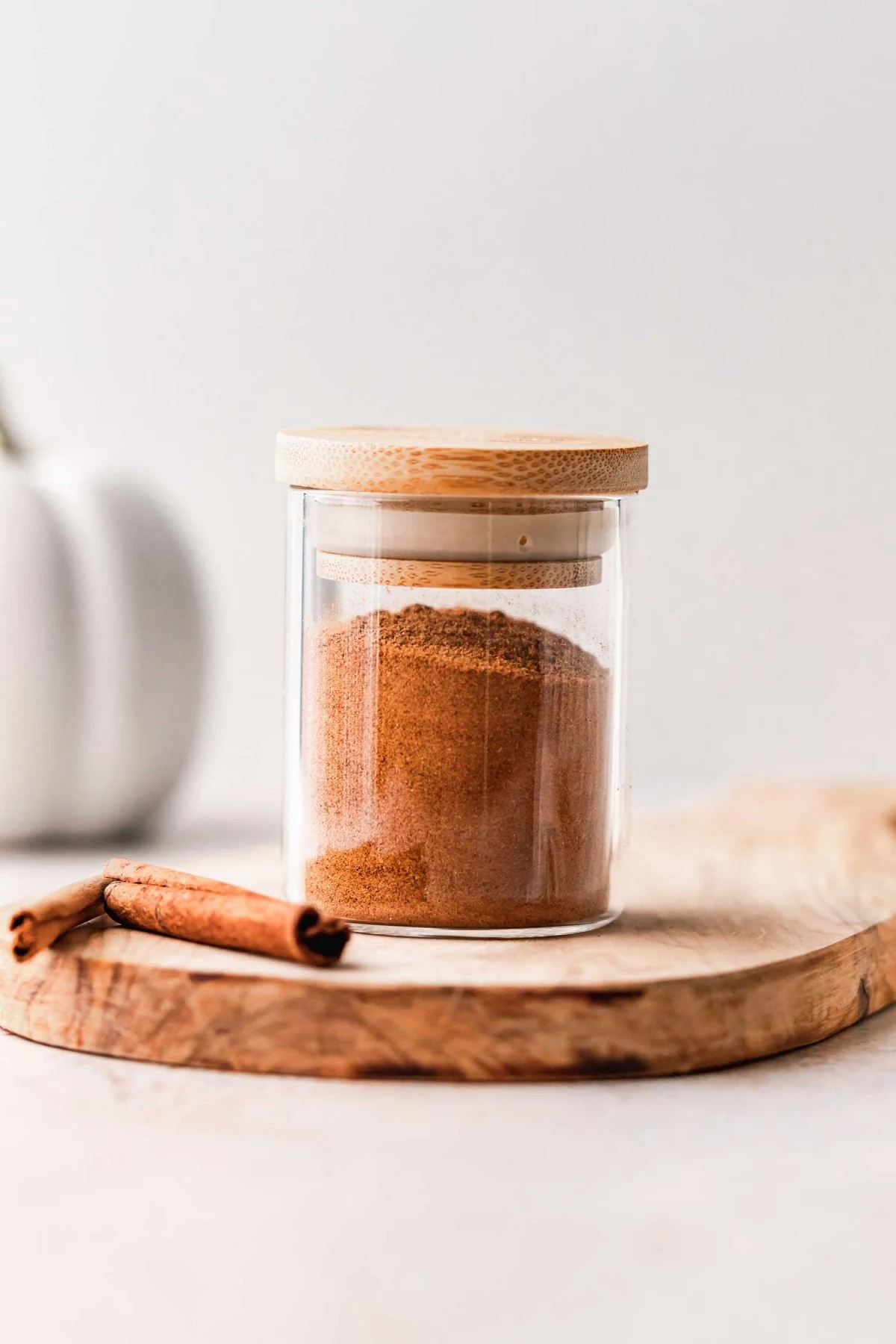
So, let’s pull back the curtain on the marketing hype. We’ll dig into each spice, what makes it tick, and what the science says. I’ll also share my own tips for blending and sourcing, and—most importantly—the safety stuff that often gets ignored. It’s time to appreciate the real value hiding in that little jar.
The Power Players: What’s Really in the Blend?
To get why this blend works, you have to meet the team. Each spice brings its own unique set of skills (and flavors) to the party, thanks to special compounds called phytochemicals. These are what give spices their signature aromas and health-supporting properties.
1. Cinnamon: The Star of the Show
Cinnamon is almost always the main ingredient, but here’s something most people don’t know: not all cinnamon is created equal. This is one of the first things I teach people.
So, there are two main players you’ll find at the store: Ceylon (often called “true” cinnamon) and Cassia (the more common, much cheaper type). How can you tell which one you have? Check the label. Cassia is often sold as “Korintje” or “Saigon” cinnamon. If it doesn’t say Ceylon, it’s almost certainly Cassia. Honestly, the price is a dead giveaway, too. A cheap $3 bottle is Cassia, while a quality jar of Ceylon will probably run you between $8 and $12. It’s worth it, and here’s why.

The key difference is a compound called coumarin. Cassia cinnamon is loaded with it. In small sprinkles, it’s no big deal. But if you’re using cinnamon regularly for its health benefits (like for blood sugar support), high doses of coumarin can be tough on your liver. Health authorities recommend a pretty low daily intake. Ceylon, on the other hand, has a lighter, more complex flavor and barely any coumarin, making it the much safer choice for daily use.
2. Ginger: The Spicy Sidekick
Ginger is what gives the blend its zesty, warming kick. This powerful rhizome (an underground stem) is a legend in traditional medicine for a good reason. Its magic comes from compounds called gingerols and shogaols, which are fantastic for soothing inflammation and nausea. The warming sensation you get from ginger? That’s literally the compounds boosting your circulation and getting to work on your digestion.
Budget Tip: While fresh ginger is amazing, don’t feel bad about grabbing the powdered stuff. It’s more concentrated, budget-friendly, and perfect for a spice blend. I’ve seen clients with bloating and mild nausea get incredible relief just by adding a quarter-teaspoon of ginger powder to their morning tea.
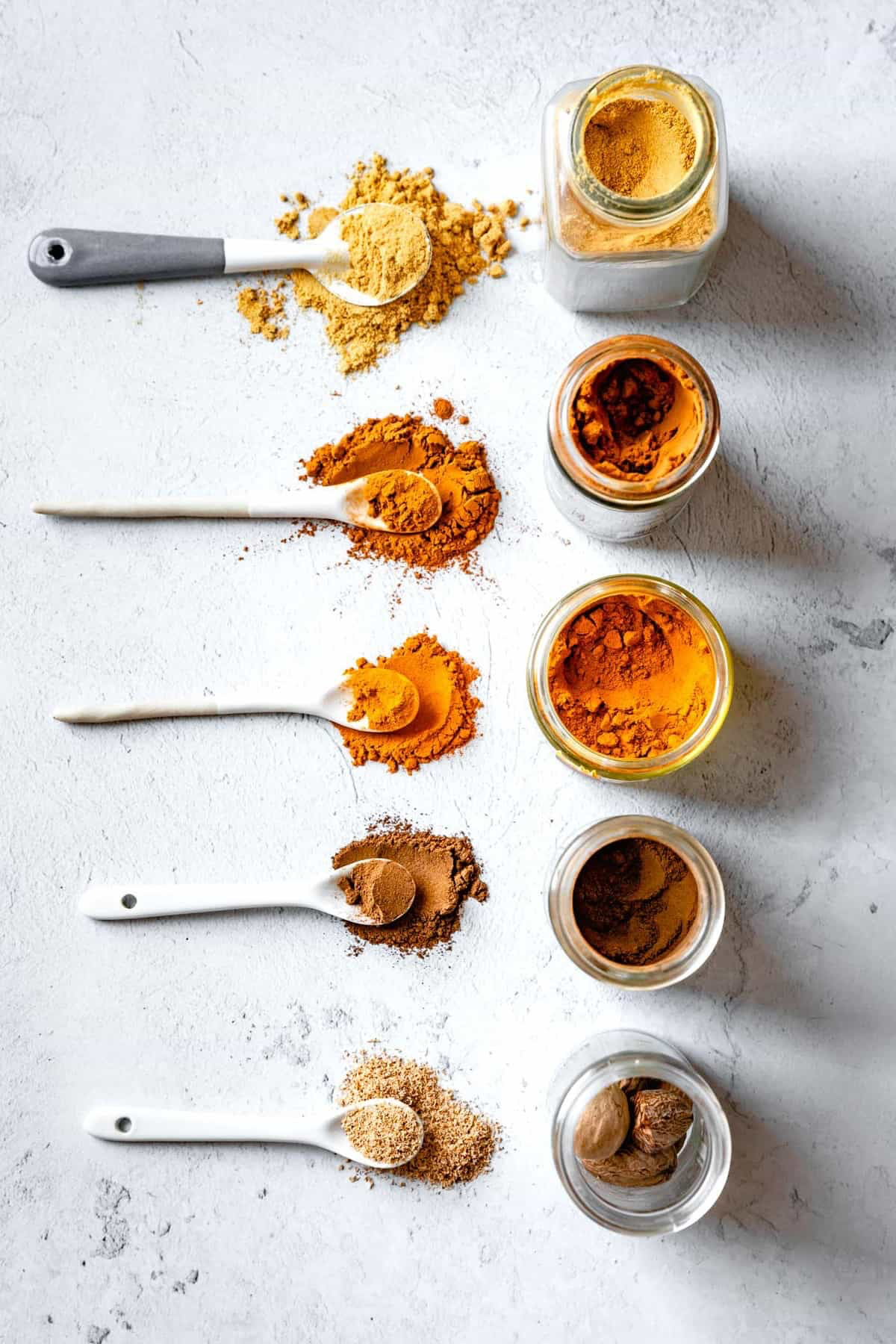
3. Nutmeg: The Warm Hug
Nutmeg adds that warm, sweet, and slightly woody note. A little goes a very long way, both in flavor and effect. It contains a compound called myristicin, which has calming properties in very small amounts. That’s probably why a dash of nutmeg in a warm drink feels so wonderfully relaxing.
Heads up! This is a big one. Myristicin is also psychoactive in large doses. And I mean large doses, like more than two full teaspoons. It can cause some seriously scary side effects like dizziness and hallucinations. I once had a college student seek advice after their friend ended up in the ER from a stupid nutmeg dare. It’s a potent spice that demands respect. In a blend like this, the amount is tiny and perfectly safe, but it’s crucial to know not to go scooping it by the spoonful.
4. Cloves: The Pungent Powerhouse
Cloves are dried flower buds with an intense, sweet, and almost medicinal flavor. They are dominated by a compound called eugenol, which is a natural anesthetic and antiseptic. Ever wonder why clove oil is a classic remedy for toothaches? It’s the eugenol at work, literally numbing the area. Ounce for ounce, ground cloves also have one of the highest antioxidant ratings of any food on the planet.
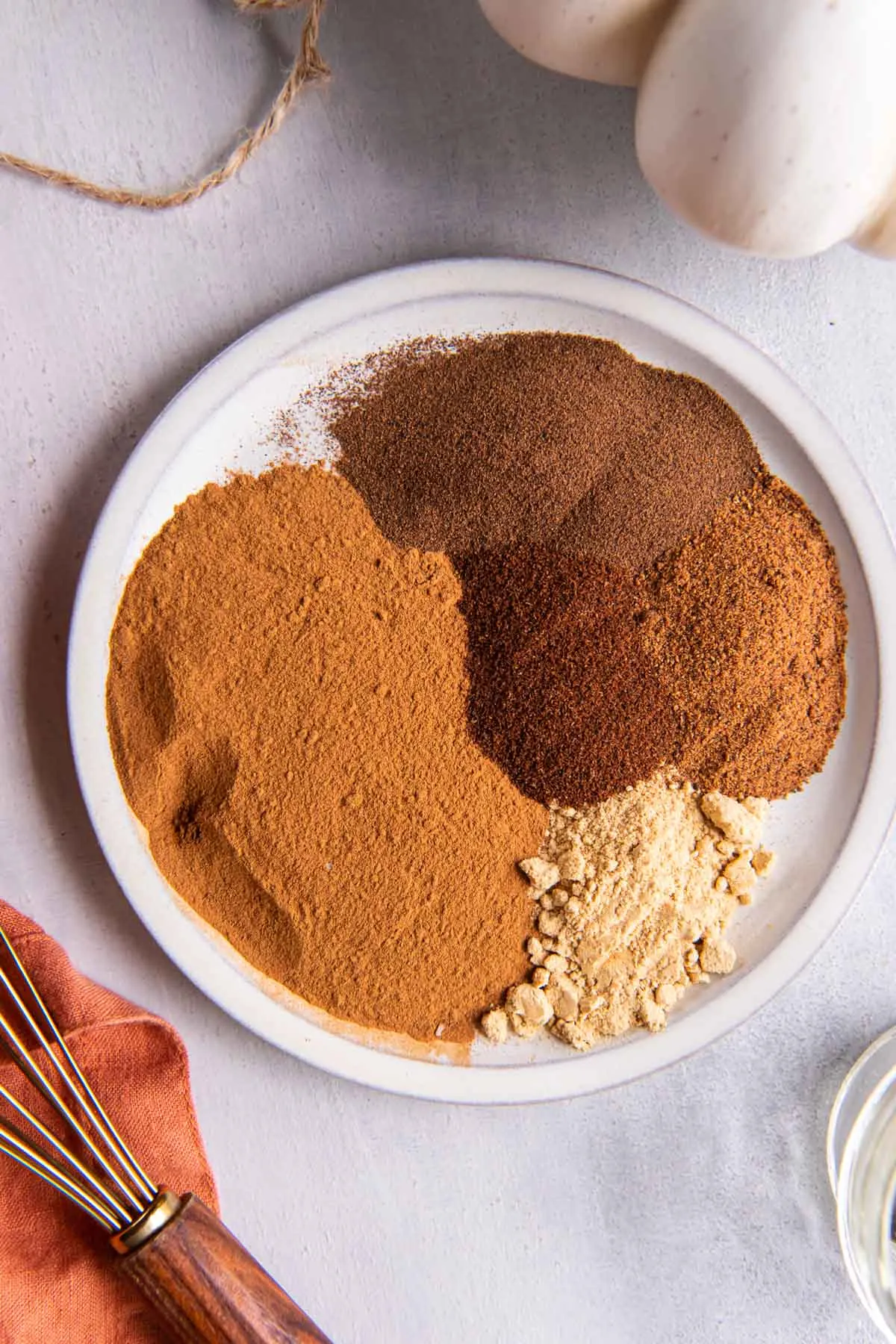
When I’m sourcing cloves, I look for whole buds that look plump and a little oily. If you press your fingernail into a good one, a bit of fragrant oil should pop out. That’s how you know it’s fresh.
5. Allspice: The One-Man Band
People often think allspice is a mix of spices, but it’s actually a single, dried berry. It got its name because its flavor tastes like a combination of cinnamon, nutmeg, and cloves. Like cloves, it’s rich in that helpful eugenol and is traditionally used as a fantastic digestive aid.
How to Blend and Source Like a Pro
The difference between a dusty, flavorless blend and a vibrant, fragrant one is all about quality and ratio. Here’s how to do it right.
My Favorite DIY Pumpkin Spice Ratio
I’ve tinkered with this for years to get the balance just right—not just for taste, but for effect and safety. I always make it in small batches.
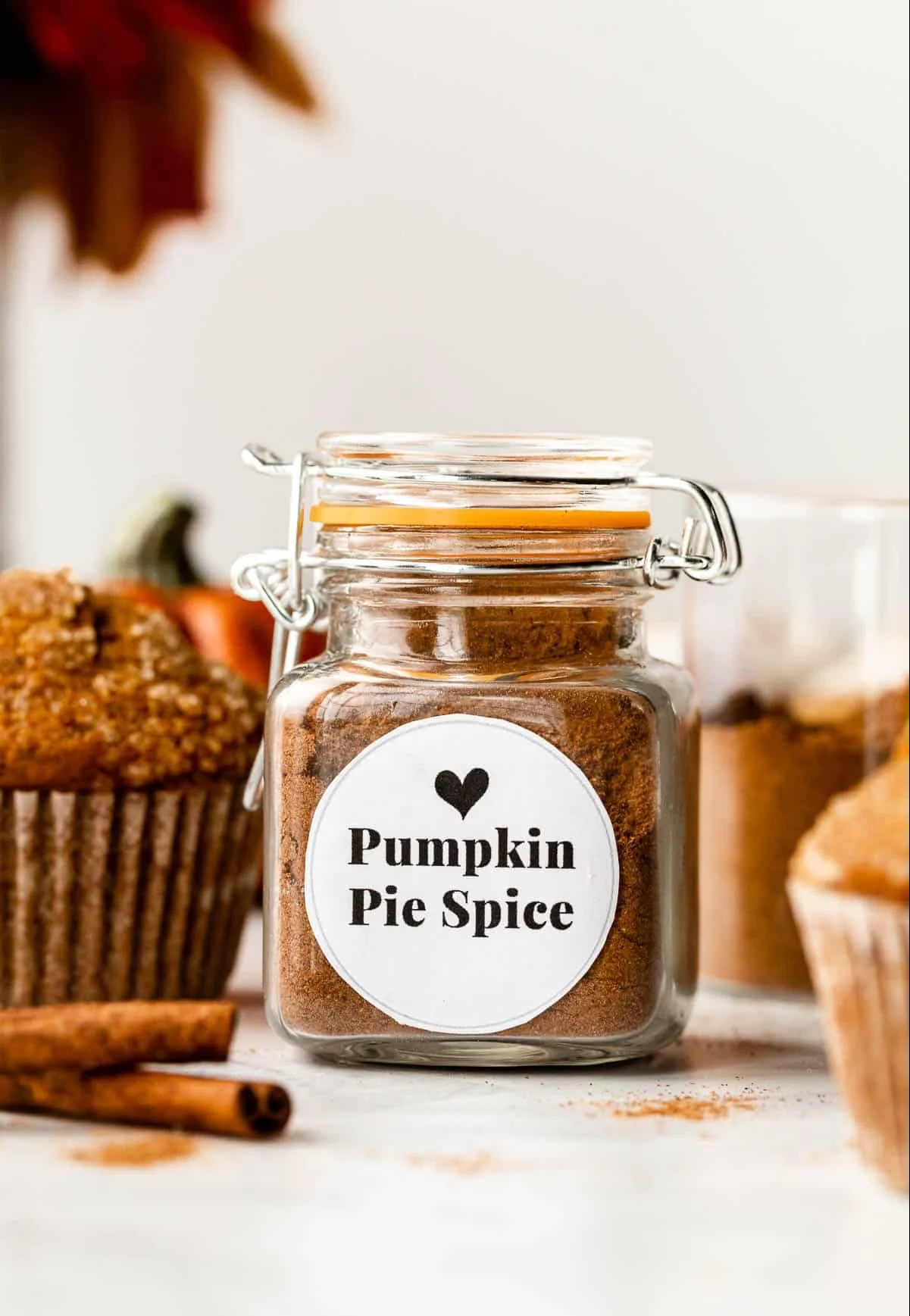
- 4 tablespoons ground Ceylon cinnamon: The heart of the blend.
- 4 teaspoons ground ginger: For that perfect warmth.
- 2 teaspoons ground nutmeg: Just enough for its cozy aroma.
- 1 teaspoon ground allspice: The bridge between the other flavors.
- 1 teaspoon ground cloves: A little goes a long way with this one!
Don’t like one of the spices? No problem. If cloves are too intense for you (a common complaint!), you can just leave them out or swap in a teaspoon of ground cardamom for a slightly different, more floral-spicy vibe.
Quick Tip: If you can, buy your spices whole—especially nutmeg and cloves. The flavor is a million times better. A cheap coffee grinder used only for spices is a fantastic investment. By the way, to clean it out so your coffee doesn’t taste like spices, just grind up a tablespoon of dry rice or a small piece of bread. It absorbs all the leftover oils and aromas. Genius, right?
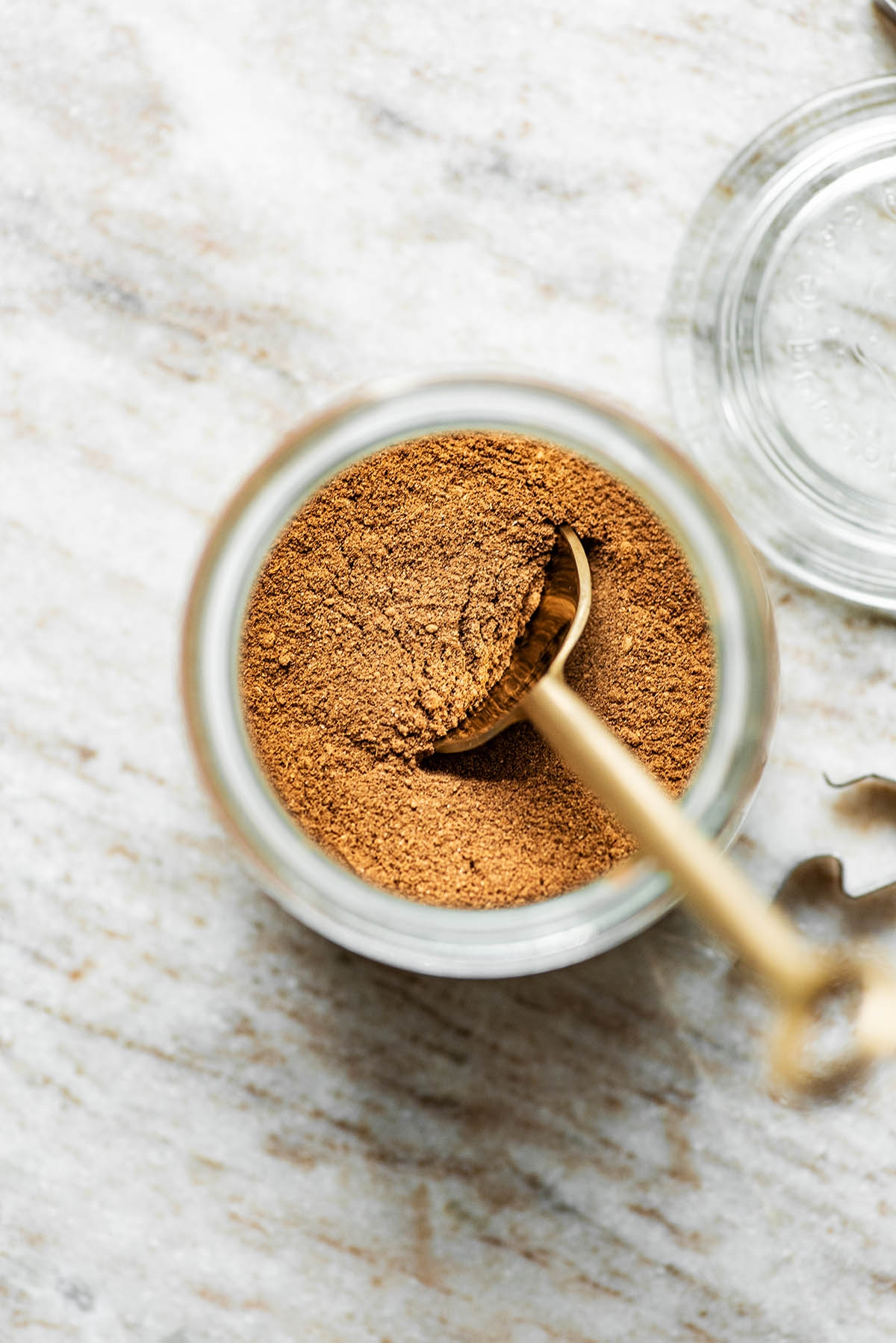
Where to Find the Good Stuff (and What to Avoid)
You don’t need a secret password to find great spices. You just need to know where to look.
- Where to Buy: Forget the dusty bottles at the giant supermarket. Check out online retailers known for quality, like Penzeys, The Spice House, or Mountain Rose Herbs for organic options. Your local co-op or an international grocery store are also excellent places to find fresh, vibrant spices.
- Red Flags: A good spice should scream its name at you when you open the jar. If the color looks pale, faded, or grayish, it’s old. If you have to stick your nose way into the jar to get a faint whiff, put it back. It’s lost its magic.
Beyond the Latte: Putting Your Blend to Work
Okay, so you have this amazing, fresh spice blend. Now what? It’s all about small, consistent habits.
For supporting blood sugar balance, the cinnamon in the blend is the key. Research suggests it can help with insulin sensitivity. I often suggest adding 1/2 to 1 teaspoon of a Ceylon-rich blend to oatmeal, yogurt, or a smoothie every day. It’s the consistency that counts.
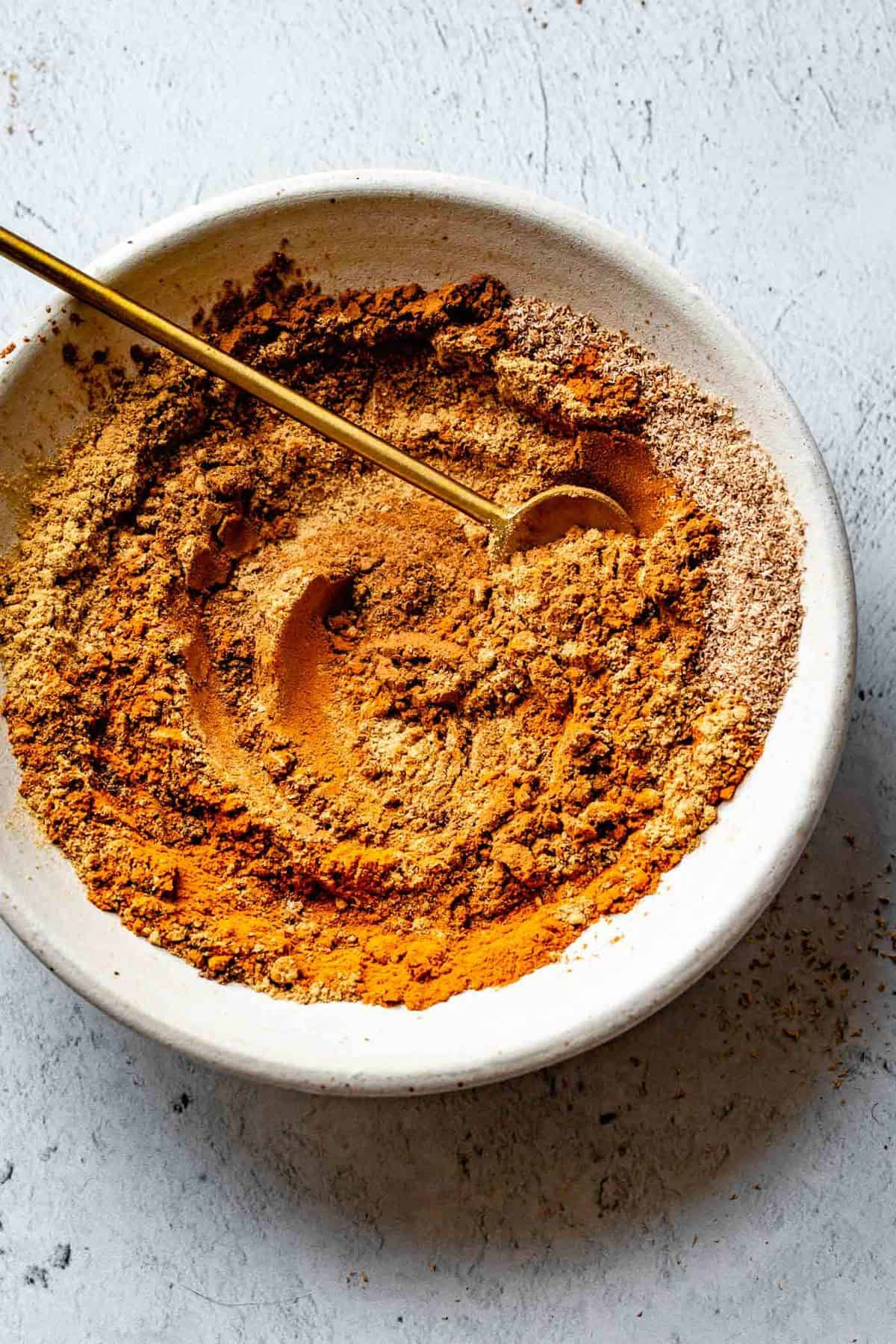
For digestion and inflammation, the ginger and cloves are your friends. A warm drink with a half-teaspoon of the blend after a meal can be incredibly settling and soothing.
Quick Win for Beginners: Feeling overwhelmed? Don’t sweat it. You don’t need all five spices to start. Just begin by adding 1/2 teaspoon of good-quality Ceylon cinnamon to your morning coffee or oatmeal. That single step is a fantastic start!
A Few Crucial Safety Notes
As a practitioner, I have to say it: natural doesn’t automatically mean risk-free. These are powerful plants.
- Watch the Cinnamon: I know I sound like a broken record, but if you’re using more than a teaspoon a day, please use Ceylon. The coumarin in the cheaper Cassia variety is a real concern for liver health over the long term.
- Drug Interactions: Heads up! Cinnamon and cloves can have a mild blood-thinning effect, so if you’re on a blood thinner like Warfarin, you need to talk to your doctor. Same goes for diabetes meds—since cinnamon can lower blood sugar, you’ll want to monitor your levels closely to avoid them dipping too low.
- Pregnancy & Kids: A sprinkle in food is totally fine. But medicinal doses of any spice, especially nutmeg and cloves, are best avoided during pregnancy. Keep it to normal culinary amounts.
At the end of the day, that beloved pumpkin spice is so much more than a fad. It’s a link to a long history of global trade, food preservation, and folk wellness. So go ahead, enjoy that latte—but now you’ll know the real secret behind what makes it so special.
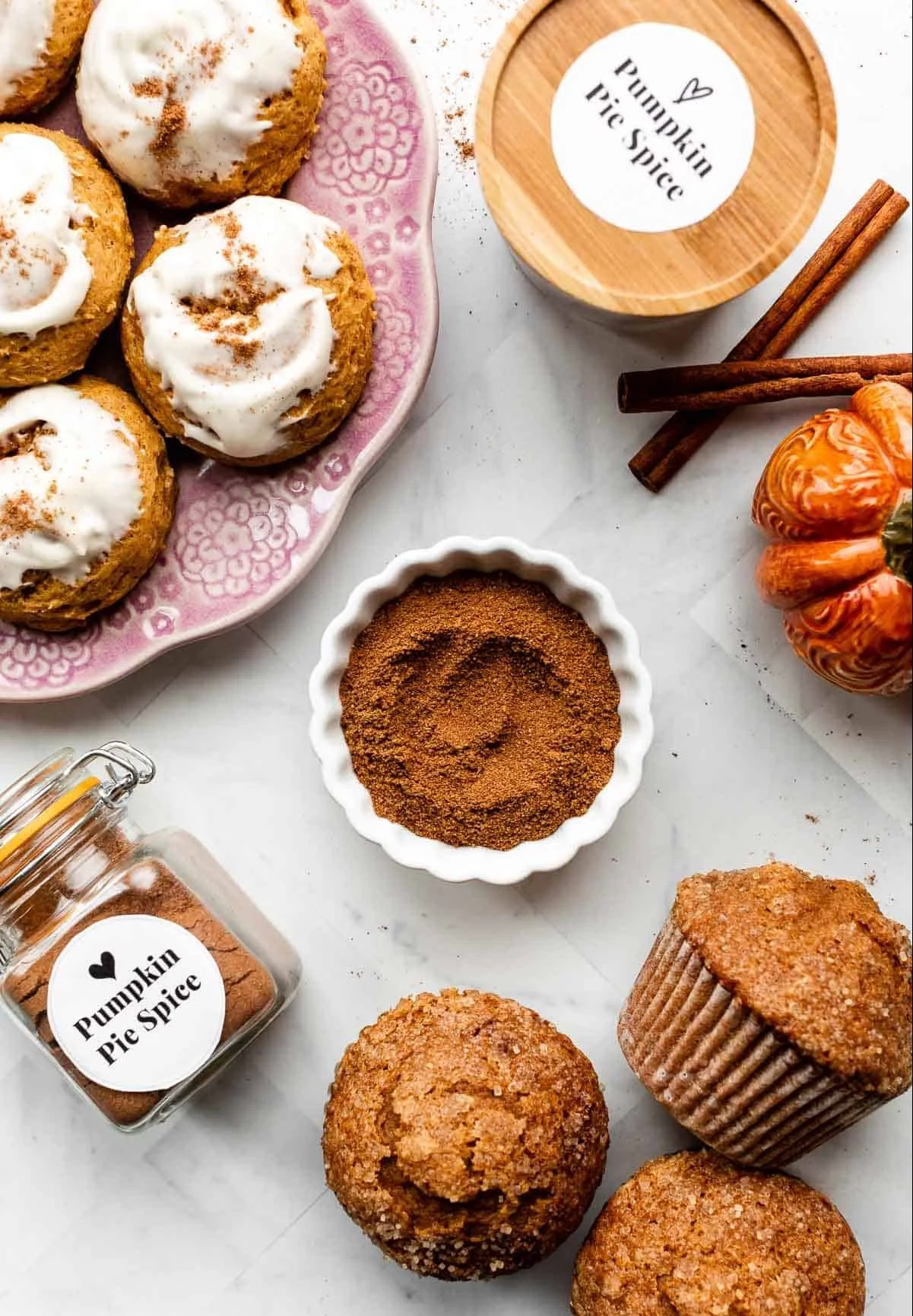
Inspirational Gallery
Ready to craft your own perfect blend? A classic, well-balanced pumpkin spice mix starts with a good ratio. Use this as your base and feel free to adjust to your personal taste.
- 3 tablespoons ground cinnamon (preferably Ceylon)
- 2 teaspoons ground ginger
- 2 teaspoons ground nutmeg
- 1 teaspoon ground allspice
- 1 teaspoon ground cloves
Cloves have one of the highest concentrations of essential oil in the spice world—up to 18% of their total weight is pure aromatic oil.
This incredible potency explains why just a pinch can perfume an entire dish and why, historically, cloves were more valuable than gold. It’s also why they should be used with a light hand in your blend to avoid overpowering the other spices.
The single best upgrade for your spice cabinet: A dedicated spice grinder. Using a blade grinder, like a Cuisinart SG-10, reserved only for spices prevents flavor contamination. Grinding whole spices like nutmeg, peppercorns, or allspice berries just before use releases a burst of fresh, volatile oils that pre-ground versions lose within months of sitting on a shelf.
Want to move beyond the standard blend?
For a spicier, more invigorating kick in your morning coffee, slightly increase the ginger and add a tiny pinch of black pepper—the piperine in pepper can enhance nutrient absorption. For a warmer, more complex profile perfect for baking, consider adding a half-teaspoon of ground cardamom for a fragrant, chai-like twist.
Your spices’ worst enemies are heat, light, and air. To preserve their precious compounds and vibrant flavors, transfer them from plastic bags to airtight glass jars. Store them in a cool, dark cabinet or drawer—never above the stove. Whole spices stored this way can remain potent for years, whereas ground spices are best used within six months.
- A warm, nutty sweetness in your baked goods.
- A deep, more complex aroma in your chai latte.
The secret? Go easy on the nutmeg and cloves. While essential, these two spices contain potent compounds (myristicin and eugenol) that can become overpowering and lend a slightly medicinal taste if used too heavily. They are the supporting cast, letting cinnamon and ginger take the lead.
Whole Spices: Higher initial cost and require a grinder. However, they retain their flavor and potency for up to 4 years, delivering more vibrant taste per gram and reducing waste.
Pre-Ground Spices: Cheaper and more convenient upfront. But their aromatic oils degrade quickly, often tasting dull within 6-12 months, forcing you to use more to get the same effect.
For maximum impact, investing in whole spices is the clear winner.
Think allspice is just for autumn pies? In Caribbean cuisine, it’s the star of the show. Known as
The simple act of grating a whole nutmeg seed releases an immediate, intoxicating aroma that pre-ground dust can never replicate. It’s the difference between a faint memory of a scent and the scent itself.
The new trend in flavor: Single-origin spices. Much like with coffee, where the spices come from matters. Specialty purveyors like Burlap & Barrel are changing the game by sourcing directly from small farms. Their Royal Cinnamon from Vietnam or Cloud Forest Cardamom offer a depth and nuance tied to a specific terroir, telling a delicious story with every pinch.










